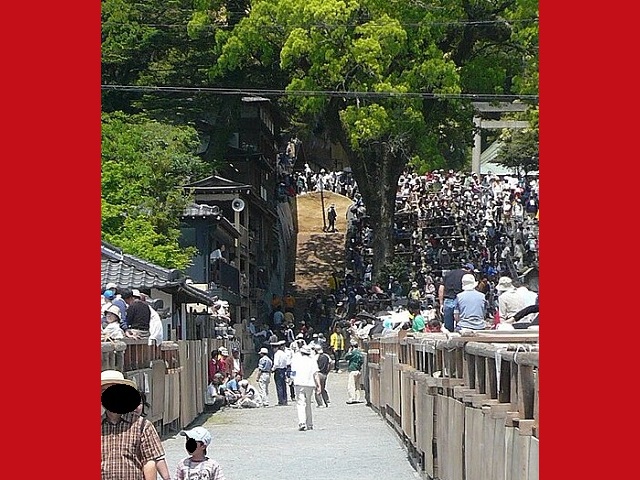
Horses that make it to the top are seen as signs of good harvest, but those that don’t may die.
Tado Taisha, a Shinto shrine in the ton of Kuwana, Mie Prefecture, was founded roughly 1,200 years ago. Horses were said to act as messengers between the local gods and villagers, conveying the will of the divine and the wishes of the people, and the equestrian connection continues to this day with the annual Ageuma, or “Rising Horses,” event.
▼ Photos from this year’s Ageuma event, held earlier this month
First held around 680 years ago, the ritual consists of local men trying to ride horses up a steep earthen embankment that leads to the shrine. Multiple horses/riders make the attempt, and tradition holds that the greater the number that succeed in making it to the top, the better the harvest will be in the months to come.
▼ Video of the 2018 event
As the above video shows, it’s a visually dynamic event. However, in recent years there have also been growing voices in opposition of it. As you might have already deduced, the idea that the harvest is tied to the number of horses that successfully make it to the top reflects the fact that not all of the animals do. In fact, the majority of the horses at this year’s event, which took place over two days, failed to summit the slope, which is so steep that it’s called a kabe, meaning “wall,” even within the official promotional tweet from Kuwana City. This year, 10 horses made a total of 18 attempts. On the first day, none of the 12 attempts were successful, and on the second day, only 3 of 6 were.
So what happens when a horse “fails” at trying to run up a wall? The results aren’t pretty, but they can be seen in the video below, recorded at this year’s Ageuma event.
To summarize for those too squeamish to watch, when a horse “fails,” it often gets stuck near the rim of the wall. The animals don’t come to clean, gentle stops either. There’s usually a sudden, impactful halt as their momentum runs out, followed by a thrashing of their legs and jerking of their back and neck as they scramble for traction.
That would be painful and dangerous enough on its own, but there are also people at the top standing by to try to forcefully get the horse over the rim. Not only do they pull on the horse’s bridle and saddle, in the above video they can sometimes be seen throwing a rope across the path after the horse gets stuck, which a pair of men then pull to, in effect, drag the horse to the top by its hind legs.
The ostensible assistance looks far from safe or painless for the horse, but the animal is in a dangerous situation either way. In the video below, a horse fails to make it to the top on its own and, when it isn’t pulled up the rest of the way, completely collapses and tumbles back down the slope.
At this year’s event, one of the horses fell while running on the lead-up to the slope, broke its leg, and was then euthanized.
Though the Ageuma ritual is a centuries-old tradition, no small number of people seem to think its time has passed. Kuwana’s official promotional tweet for this year’s event, which invites people to “come see the gallant appearance of the riders and horses,” drew almost universally negative comments, with reactions including:
“I was shocked to see this kind of event being held…It is incredibly cruel, and I wish it would be discontinued.”
“A horse breaking its leg means it’s going to die. Calling this a ritual, and charging admission for the people coming to see it? The gods must be heartbroken, seeing the shallowness of human beings.”
“Do the horses look ‘gallant’ as they fall back down that cliff?”
“If every horse that tried in a day failed, I’m pretty sure that means it’s not within a horse’s abilities, and trying to force it to go beyond those limits is animal abuse.”
Perhaps adding to the negative reaction is that this year was the first time for the Ageuma event to be held since 2019. It was cancelled between 2020 and 2022 as part of pandemic countermeasures, and attitudes may have further shifted about what is and isn’t acceptable treatment of animals during that time to a greater extent than they would have in just a single year.
Organizers have not made any statement to the effect that they are considering discontinuing the Ageuma ritual, but the Japanese government’s House of Councilors’ Agriculture, Forestry and Fisheries Committee has said it will be discussing the event at its meeting this week.
Sources: The Sankei News via Hachima Kiko, NHK News Web, Twitter/@kuwana_city
Top image: Wikipedia/Douggers (edited by SoraNews24)
● Want to hear about SoraNews24’s latest articles as soon as they’re published? Follow us on Facebook and Twitter!